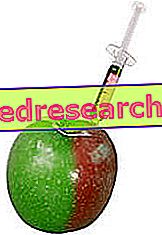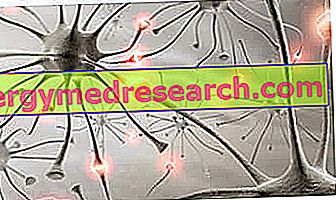Related articles: Trisomy 13
Definition
Trisomy 13 is a genetic disease caused by the presence of a supernumerary chromosome 13, which involves a series of malformations of the baby's organs.
This pathology is found in about 1 case every 8, 000-15, 000 newborns.
Most cases of trisomy 13 occur in an absolutely random manner, as this syndrome has a low hereditary character. However, there is a significant risk of transmission in the event that a parent is a healthy carrier of the chromosomal anomaly (karyotype with Robertsonian translocation).
Trisomy 13 is one of the genetic diseases most incompatible with life: endouterine death occurs in over 95% of cases. The fetuses that survive tend to be small for gestational age.

Most common symptoms and signs *
- Miscarriage
- Alopecia
- Small child for gestational age
- cyclopia
- cryptorchidism
- Dysphagia
- Dyspnoea
- Hydrops Fetal
- hypertelorism
- Hearing loss
- Dental malocclusion
- meningocele
- Microcephaly
- Microphthalmos
- micrognathia
- Fetal death
- Nystagmus
- omphalocele
- polydactyly
- Reduced vision
- Growth delay
- Mental delay
- Blurred vision
Further indications
The most common anomalies that can be found in live births can include: cerebral and cardiac malformations, facial dysmorphisms and severe psychomotor retardation.
In 70% of cases there is a defect in the separation of the brain in the two hemispheres (holoprosencephaly). The concomitant facial malformations are heterogeneous and of variable severity; these may include cleft palate and cleft lip, hypertelorism, premaxillary agenesis, cutaneous aplasia of the occipital region (lack of part of the skin and / or hair), cebocefalia and cyclopia (presence of only one central eye), in the absence of the nasal skeleton. The ears are malformed and usually have a low implant; deafness is a frequent symptom. In the back of the neck there are abundant folds of skin.
There may also be micro- or ano-ftalmia, iris coloboma and retinal dysplasia.
In the case of trisomy 13, post-axial polydactyly (presence of more fingers on the hands and feet), monkey-like groove (single palm line) and narrow, hyperconvex nails are often found. In about 80% of cases there are serious congenital heart defects (eg interventricular and / or interatrial defect, patency of the ductus arteriosus and dextrocardia) and urogenital abnormalities (renal defects, cryptorchidism and malformations of the scrotum occur in males, uterus bicornas in females). Apnea episodes are common during the first months of life. Mental retardation is severe.
Trisomy 13 can be suspected in the prenatal period with ultrasound due to the presence of ultrasound abnormalities (holoprosencephaly, polydactyly and intrauterine growth retardation) and can be confirmed by analysis of the fetal karyotype following amniocentesis or chorionic villus sampling.
Management is only a support. Surgical treatment of malformations can only minimally improve the poor prognosis associated with this syndrome: half of the patients die within the first month of life and 90% within the first year due to cardiac, renal or neurological complications.



